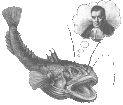UW Aquatic & Fishery Sciences Quantitative Seminar
Tim Cline
School of Aquatic and Fishery Sciences, University of Washington
Ecological tradeoffs between commercial salmon fisheries and foraging opportunities for trout from alternative management strategies
Abstract
Over the last decade there has been increasing emphasis on shifting towards ecosystem-based fisheries management. A challenge for implementing ecosystem-based fisheries management is evaluating tradeoffs between competing objectives, which is critical for buy in from multiple stakeholders and determining optimal management targets. Bristol Bay, Alaska, produces the world’s largest commercial sockeye salmon fishery. However, species within upstream ecosystems have evolved to take advantage of the annual pulse of marine derived energy from spawning adult salmon. This subsidy provides the majority of the annual energy intake for resident stream fishes, the target of valuable sport fisheries. The current management system limits the number of salmon allowed to reach the spawning grounds with the goal of maximizing commercial salmon harvest and minimizing oversaturation during spawning. Thus, the goals for maximizing commercial yield may be in opposition of those that support a thriving sport fishery. Here, I use a simulation-modeling framework to evaluate how changes in escapement shift the relative balance of realized benefits between commercial salmon fisheries and sport fisheries for resident stream fishes. This research contributes to a growing knowledge of the shape of tradeoffs between competing objectives in management frameworks considering multiple stakeholders.

